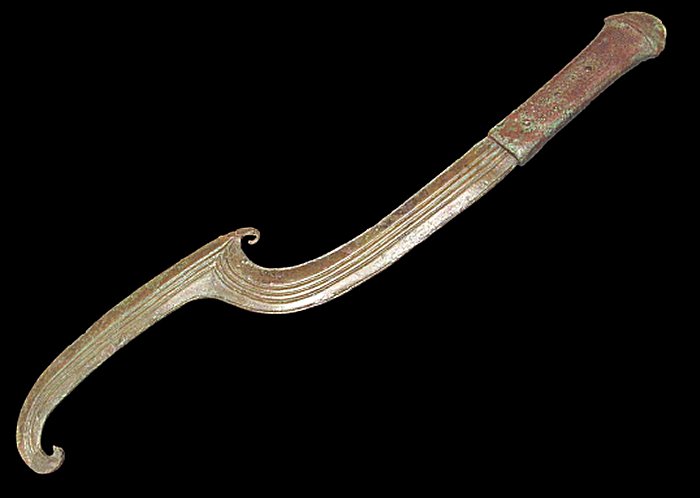Khopesh Sword – Symbolic Weapon Of The Pharaohs And Emblem OF Egyptian Deities
Angela Sutherland - AncientPages.com - Among many ancient weapons, we find their most unusual shapes.
One such weapon is the bronze khopesh, a sickle-shaped sword, usually described as a kind of sword-ax, widely used among warriors in the ancient Near East from 3000 BC to about 1300 BC.
Harpe-AO 4354 - khopesh / archaeological artifact - circa 2000 BC. Image credit: Rama- CC BY-SA 3.0 FR
The khopesh weapon was prevalent among Babylonians, Phoenicians, Egyptians, and many other ancient cultures. There is "a remarkable similarity of a type of sword from Benin in West Africa" and the khopesh sword. 1
The khopesh is mainly known from Egypt and, for the first time, is in the sources of the XVII dynasty as the weapon of Pharaoh Kamose, the last king of the 17th dynasty (c. 1630–1540 BC). In manufacturing this weapon, the Egyptians learned from the Canaanites or took it directly from the invading Hyksos, along with other military innovations.
In many depictions, the khopesh represents an emblem of the Egyptian deities and a symbolic weapon of the Pharaohs. Some khopesh were discovered in royal graves, such as the two examples found with Tutankhamun.
In her book "Warfare and Weaponry of Dynastic Egypt," Rebecca Dean writes that "while the ax remained an important weapon throughout the Eighteenth Dynasty, it at times appeared to be gradually replaced with the sickle sword - the khopesh."
 Relief of Ramses III at Medinet Habu, Theban Necropolis, Egypt. The Pharaoh is using the Khopesh Sword. Credit: I, Rémih - CC BY-SA 3.0
Relief of Ramses III at Medinet Habu, Theban Necropolis, Egypt. The Pharaoh is using the Khopesh Sword. Credit: I, Rémih - CC BY-SA 3.0
The author describes the weapon's blade as "wedge-shaped (widening at the back) with the cutting edge on the outer edge, as in the case of the scimitar blade, and functioned as a long and thin, almost ax-like weapon. Typically, the weapon is 50-60 cm (20–24 inches) long, but also smaller specimens are found. Its sharpness concentrates only on the outside portion of the curved end." 2
Technically, the khopesh is distinguished from other weapons by its considerable penetration. Its weight was approximately two kilograms, and the unique shape allowed the warrior to choose the way to attack in different conditions.
Khopesh Evolved From Epsilon Axes
The khopesh evolved from the epsilon or similar crescent-shaped axes used in warfare.
Dan Howard writes in his book "Bronze Age Military Equipment" that "the khopesh shows" the probable evolution from the epsilon ax (not the sickle). The epsilon ax was likely the ancestor of the khopesh. Cutting typologies were more common in Egypt, but they also used piercing axes." 3
The khopesh's blade's blunt end edge effectively served as a stick and hook. The inside curve was used to trap an opponent's arm or pull his shield out of the way.
The handle is separated from the barrel by a slight thickening, which forms a barrier directly protecting the hand from a blow. A straight handle with an extended or bent head helps to strengthen the grip.
 Bronze Khopesh sword from the time of Ramses II. Credit: Aoineko - CC BY-SA 3.0
Bronze Khopesh sword from the time of Ramses II. Credit: Aoineko - CC BY-SA 3.0
These weapons changed from bronze to iron in the New Kingdom period between the 16th century BC and the 11th century BC, covering Egypt's Eighteenth, Nineteenth, and Twentieth dynasties.
In ancient Egypt, the word khopesh (perhaps derived from "leg" ("leg of beef") because of their similarity in shape. The hieroglyph for ḫpš ('leg' or (kh.p.sh = 'knee') is found as early as the Coffin Texts (c. 2181–2055 BC).
Weapon Smiths Worked Hard To Devise This Sophisticated Not Commonly Used Elite Weapon
Many weapon smiths worked hard for a very long time to produce a long sword that was both resilient and capable of taking a hard edge so that it could be used effectively for striking and thrusting. One solution was the bronze khopesh that "despite its odd shape, was widely used in the Middle East, and subsequently evolved into such swords as the Greek "machaira" and the Ghurka "kukri," traditionally associated with the Nepali-speaking Gurkhas of Nepal and India. 2
The earliest known depiction of a khopesh is from the Stele of Vultures, showing King Eannatum of Lagash with the khopesh in his hand; this would date the khopesh to at least 2500 BC. There are other depictions of the khopesh, too.
 Bronze Egyptian Khopesh with the name of Pharaoh Ramses II. Louvre Museum.
Bronze Egyptian Khopesh with the name of Pharaoh Ramses II. Louvre Museum.
One of the earliest is on a Mari cylinder seal. At Byblos and Shechem, a Canaanite city mentioned in the Amarna letters and the Hebrew Bible's first capital of the Kingdom of Israel dated to a century later.
Except for battles, the khopesh also represented one of the emblems associated with the most important deities of ancient Egypt and symbolized the magical weapon of the Pharaoh.
In art, this sword of Egyptian warriors - was a sign of victory over enemies.
In addition, in this role, the weapon also appears in Egyptian mythology and astronomy. As stated in the hieroglyphs, the ancient Egyptian star deity Mesechtiu originated from the constellation Khopesh (Big Dipper). The Egyptian god Mesechtiu is later mentioned in the Book of the Dead.
The khopesh came out of use about 1300 BC; however, nomadic tribes called Shasu (Bedouins) used it during the 19th dynasty.
Written by – A. Sutherland - AncientPages.com Senior Staff Writer
Updated on January 22, 2023
Copyright © AncientPages.com All rights reserved. This material may not be published, broadcast, rewritten or redistributed in whole or part without the express written permission of AncientPages.com
Expand for references- Bondarenko, Dmitri M., and Peter M. Roese. "Benin Prehistory: The Origin and Settling down of the Edo." Anthropos94, no. 4/6 (1999): 542-52
- Rebecca Dean, "Warfare and Weaponry of the Dynastic Egypt",
- Dan Howard, "Bronze Age Military Equipment"
BLAIR, CLAUDE. "METALS IN THE SERVICE OF MARS: ARMS AND ARMOUR." Journal of the Royal Society of Arts 129, no. 5304 (1981): 764-81.
More From Ancient Pages
-
 Ruins Of Sodom, Lost Ancient Biblical City Destroyed By God – Uncovered
Archaeology | May 5, 2015
Ruins Of Sodom, Lost Ancient Biblical City Destroyed By God – Uncovered
Archaeology | May 5, 2015 -
 Lost Villa Of First Roman Emperor Augustus Found At Somma Vesuviana In Southern Italy
Archaeology | Apr 19, 2024
Lost Villa Of First Roman Emperor Augustus Found At Somma Vesuviana In Southern Italy
Archaeology | Apr 19, 2024 -
 Archaeological Mystery Of Laos Megalithic Jars Continues – New Attempt To Solve The Riddle
Archaeology | Mar 12, 2021
Archaeological Mystery Of Laos Megalithic Jars Continues – New Attempt To Solve The Riddle
Archaeology | Mar 12, 2021 -
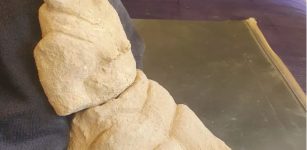 8,000-Year-Old Yarmukian ‘Mother Goddess’ Figurine Discovered In Israel
Archaeology | Jul 18, 2022
8,000-Year-Old Yarmukian ‘Mother Goddess’ Figurine Discovered In Israel
Archaeology | Jul 18, 2022 -
 Surprising Evolution Discovery – Extinct Subterranean Human Species With Tiny Brains Used Fire
Archaeology | Dec 9, 2022
Surprising Evolution Discovery – Extinct Subterranean Human Species With Tiny Brains Used Fire
Archaeology | Dec 9, 2022 -
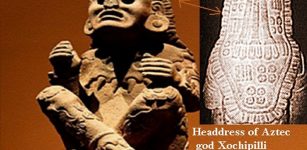 Xochipilli: Aztec God Of Love, Music, Song And Ecstatic Mushroom Trance
Aztec Mythology | May 19, 2018
Xochipilli: Aztec God Of Love, Music, Song And Ecstatic Mushroom Trance
Aztec Mythology | May 19, 2018 -
 Killer-Of-Enemies – Mysterious Non-Human Teacher And Hero Of The Apache Indians
Featured Stories | Nov 16, 2020
Killer-Of-Enemies – Mysterious Non-Human Teacher And Hero Of The Apache Indians
Featured Stories | Nov 16, 2020 -
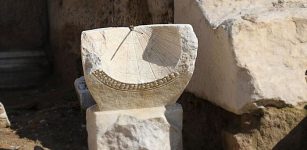 2,000-Year-Old Sundial Discovered In Ancient City Of Laodicea, Turkey
Archaeology | Mar 25, 2020
2,000-Year-Old Sundial Discovered In Ancient City Of Laodicea, Turkey
Archaeology | Mar 25, 2020 -
 Great Pyramid of Cholula Is The Largest In The World Today
Ancient History Facts | Feb 9, 2016
Great Pyramid of Cholula Is The Largest In The World Today
Ancient History Facts | Feb 9, 2016 -
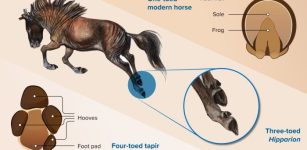 Modern Horses Have Lost Their Additional Toes, Scientists Confirm
Evolution | Jun 21, 2023
Modern Horses Have Lost Their Additional Toes, Scientists Confirm
Evolution | Jun 21, 2023 -
 On This Day In History: Columbus Reached Honduras With His Ships – On July 30, 1502
News | Jul 30, 2016
On This Day In History: Columbus Reached Honduras With His Ships – On July 30, 1502
News | Jul 30, 2016 -
 Mysterious Kola Pyramids Built By An Unknown Lost Ancient Civilization Can Rewrite Ancient History
Civilizations | Aug 3, 2020
Mysterious Kola Pyramids Built By An Unknown Lost Ancient Civilization Can Rewrite Ancient History
Civilizations | Aug 3, 2020 -
 Fra Mauro Medieval Map: Accurate And Detailed Work Attesting To Advanced Geographic Knowledge Of Contemporary Cartographers
Artifacts | Feb 8, 2019
Fra Mauro Medieval Map: Accurate And Detailed Work Attesting To Advanced Geographic Knowledge Of Contemporary Cartographers
Artifacts | Feb 8, 2019 -
 3D Scans Reveal Secrets Of Rare Ancient Canoe From Lake Mendota In Wisconsin
Archaeology | Jun 3, 2022
3D Scans Reveal Secrets Of Rare Ancient Canoe From Lake Mendota In Wisconsin
Archaeology | Jun 3, 2022 -
 A Scientific Surprise: Bering Land Bridge Formed Late During Last Ice Age
Archaeology | Dec 27, 2022
A Scientific Surprise: Bering Land Bridge Formed Late During Last Ice Age
Archaeology | Dec 27, 2022 -
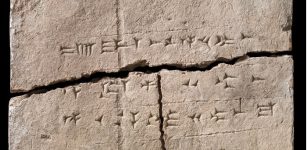 Ancient DNA Extracted From A 2,900-Year-Old Clay Brick – Unique Time Capsule Of Plant Life
DNA | Aug 23, 2023
Ancient DNA Extracted From A 2,900-Year-Old Clay Brick – Unique Time Capsule Of Plant Life
DNA | Aug 23, 2023 -
 Unraveling The Mystery Behind The Perplexing Story Of Pied Piper Of Hamelin
Featured Stories | Sep 29, 2015
Unraveling The Mystery Behind The Perplexing Story Of Pied Piper Of Hamelin
Featured Stories | Sep 29, 2015 -
 Unique, Well-Preserved 4,000-Year-Old Boat Discovered Near The Ancient City Of Uruk
Archaeology | Apr 4, 2022
Unique, Well-Preserved 4,000-Year-Old Boat Discovered Near The Ancient City Of Uruk
Archaeology | Apr 4, 2022 -
 Climate Played A Crucial Role In Human Migration From Africa – New Study
Archaeology | Dec 8, 2023
Climate Played A Crucial Role In Human Migration From Africa – New Study
Archaeology | Dec 8, 2023 -
 Pharaoh Hor Aha – 1st Dynasty Ruler Of Ancient Egypt Who Founded The City Of Memphis And May Have Been The Legendary Menes
Featured Stories | Jun 23, 2018
Pharaoh Hor Aha – 1st Dynasty Ruler Of Ancient Egypt Who Founded The City Of Memphis And May Have Been The Legendary Menes
Featured Stories | Jun 23, 2018

